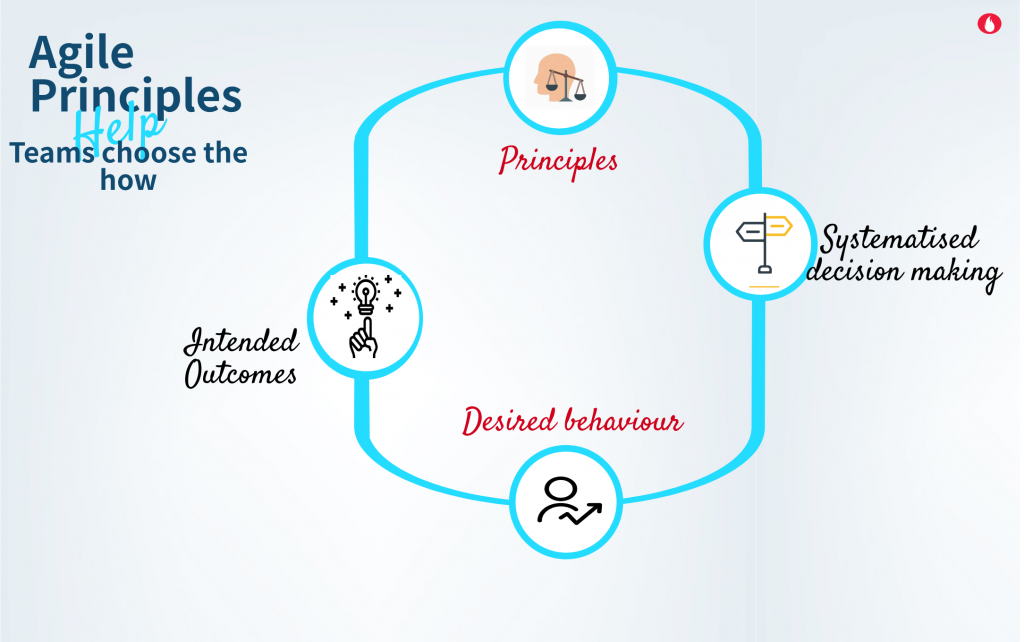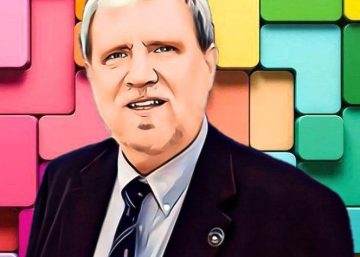One of the trick questions in a Scrum master certification: ‘Is Agile a framework, a process a tool or a mindset?’. The correct answer depends on who you ask and what their objectives are. True to form, at a quick glance, it can appear as a tool-set or a skill set. At its core it is fundamentally a way of thinking. A mindset! The 17 creators of Agile defined only the values integral to being Agile. Emphasising that teams were best placed to choose the how of solving the problem. Organisations are comfortable with investing in tools and skills. These are tangible and easy to do. Project management tools to enable agile is expected to be a 6.6 BUSD industry by 2026. Mindset shifts on the contrary are difficult. They demand more arduous effort than organising a programme. And that is the crux of why it is so tough.
Agile Manifesto did not evolve in a day.
There is a reason why the creators of Agile did not define the ‘one’ framework or tool in the manifesto. Many of them had been working on their own frameworks and processes to improve software development. When they did come together in 2001, onlookers did not expect any outcome from the meeting. It would be a bit like putting Elon Musk, Jeff Bezos, Satya Nadella, Zhang Ruimin, Jack Ma in a room. And then expecting them to agree on ‘a single way of working’ that is beneficial to the world.
Yet that day in Utah, amidst all the skiing and good food, what they found easy to agree upon was what they ‘valued‘. These became the ‘values’ of Agile intended to create better ways of working in the industry : The Agile Manifesto. Letting the team choose the how of the implementation.
Guiding the team to choose the how.
The creators of the Agile Manifesto reckoned that teams would face unique challenges. The values of an agile mindset or the Agile Manifesto is a north star. It helps teams chart the direction in the face of whatever challenges they face. They wanted to let the teams choose the how. Yet felt that a set of agile principles will guide teams in their implementation journey. The twelve Agile principles help the team choose the how under any circumstance
Principles are the causal relationships of behaviour and consequence. Principles that are clearly stated, whose logic is easy to assess and implementation observed, help in decision making. They aid in systemic decision making rather than being individual dependent. Principles allow the teams to choose the how in a guided manner given the challenge. Teams do not have to do it afresh every time or nor have to rely on past experience alone. Every situation will throw up new dilemmas and may warrant a unique set of solutions. Strong principles prepare for any and all situations.

Principles of Agile
The original list of twelve Agile principles is here. It is listed below for ease.
- Our highest priority is to satisfy the customer through early and continuous delivery of valuable software.
- Welcome changing requirements, even late in development. Agile processes harness change for the customer’s competitive advantage.
- Deliver working software frequently, from a couple of weeks to a couple of months, with a preference to the shorter timescale.
- Business people and developers must work together daily throughout the project.
- Build projects around motivated individuals.
- Enable face-to-face interactions.
- Working software is the primary measure of progress.
- Agile processes promote sustainable development.
- Continuous attention to technical excellence and good design enhances agility.
- Simplicity-the art of maximising the amount of work not done–is essential.
- The best architectures, requirements, and designs emerge from self-organising teams.
- At regular intervals, the team reflects on how to become more effective, then tunes and adjusts its behaviour accordingly.
When Principles are at work
When Principles are at work, they often show up in simple ways. For instance, take two principles of agile
(1) enable face to face interaction and
(2) best architecture and design emerge from self organised teams.
When teams allow these first principles to guide them in implementation, it reflects in the following decisions:
- the location of the team : Co-located or distributed?
- The structure and size of the team : Should the team size be 3 or 7 to ensure that they can be self organised. What is the number beyond which interactions become complex to manage?
- The ways of working of the team: Should team have open plan offices, or invest in superior video calling tech.
The principles thus become the guiding light when there are dilemmas and forks in the road. These twelve Agile principles ‘in tandem’ guide thought and decisions for teams.
Agile is a conversation.
The Agile values and principles need conscious and consistent practice for it to be a way of working. Where conversations and reflection guide thought and action rather than tools and processes. A seasoned Agile coach remarked – The best tool you need is a marker and white board. It reminds you that being agile is not about the tools you use. It is about enhancing the quantity and quality of human interactions. Agile is about ensuring team members have the freedom to choose and skills to work on solving problems. Encouraging conversations and enabling teams is the secret sauce of an agile mindset. And that makes agile deeply human!




February 18, 2020, 6:19 pm
May 28, 2020, 6:22 am
June 24, 2020, 7:01 am
October 27, 2020, 9:01 am
June 8, 2021, 12:56 pm
January 4, 2022, 8:30 pm
March 15, 2022, 8:45 pm
April 28, 2022, 7:59 pm
October 11, 2022, 8:30 pm